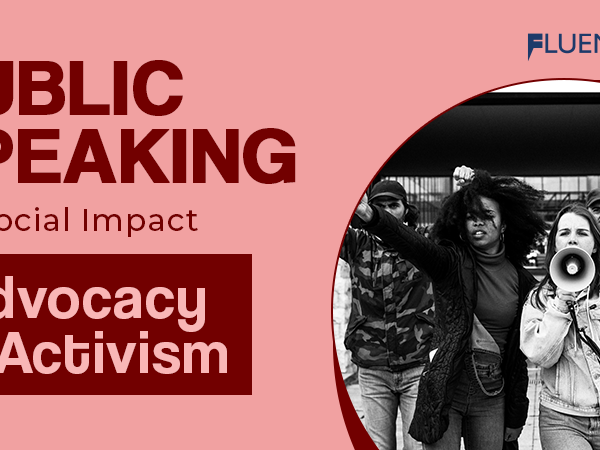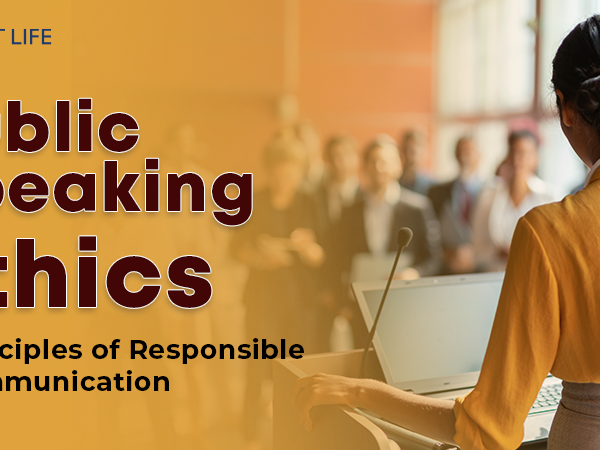Public speaking is an amazing art-form. A key part of it is to overcome stage fright of public speaking which can make or break the performance. It’s normal to feel anxious before a crowd, but with the correct techniques and attitude, anyone can triumph over this challenge.
Stage fright of public speaking is triggered by our primal instincts. Adrenaline is released, causing trembling hands or a racing heart. Recognizing this physical reaction allows us to reframe our perspective on stage fright.
The most efficient way to overcome stage fright is to prepare thoroughly. Rehearsing the speech or presentation multiple times helps us become accustomed and comfortable with the material. This builds confidence and offers a sense of control.
Jane Doe, a well-known public speaker, had to struggle with stage fright too. At first, she was scared to speak in front of a lot of people. However, she practiced a lot and started with small speaking engagements. With perseverance and determination, she overcame her fear and now she is admired by many.
Understanding Stage Fright of Public Speaking
To overcome stage fright while engaging in public speaking, understanding the phenomenon of stage fright is crucial. In this section, we will delve into the definition of stage fright and explore its underlying causes. By gaining insight into what stage fright entails and its potential triggers, you can better equip yourself to address and conquer this common fear.
Definition of Stage Fright
Stage fright, also called performance anxiety, is an intense fear or nervousness felt by individuals when performing in front of an audience. It is known by physical and psychological signs like a fast heart rate, sweaty palms, shaking voice, and negative thoughts. This can affect anyone, from actors, musicians, to public speakers, or even everyday people giving a professional presentation.
The fear of judgment from others contributes to this distress, leading to negative self-evaluation. The body releases stress hormones like adrenaline, which heightens the anxiety. This makes it harder to give their best performance.
Negative beliefs about one’s abilities can become a harmful cycle. The fear of mistakes or humiliation can lead to avoiding performances or intense fear before and during them.
Famous performers have also struggled with stage fright. Vladimir Horowitz was regarded as one of the greatest pianists but had intense stage fright. He canceled performances but still practiced in private. Despite his struggles, he still wowed audiences.
It’s important to understand stage fright is common and affects many. By addressing why it happens and using coping techniques like deep breathing and relaxation, individuals can conquer their performance anxieties and regain control of their expression or presentations.
Causes of Stage Fright of Public Speaking
Stage fright, also known as performance anxiety, can be caused by various reasons. Fear of the audience judging you is the main one. Anxiety and self-doubt may arise from the pressure to meet expectations and perform perfectly. Plus, worry over making mistakes or forgetting lines can intensify stage fright.
Inadequate preparation can also contribute to it. If performers don’t feel competent enough, they become more vulnerable to stage fright. The fear of failing is another factor which plays a huge role. This can lead to intense pressure and nervosity due to the possibility of criticism or negative evaluations.
To overcome stage fright, there are several strategies:
- Firstly, deep breathing exercises help relax and reduce anxiety. Taking slow breaths before going on stage enables performers to regulate their physical responses and stay calm.
- Secondly, visualization techniques are useful when managing stage fright. Visualizing yourself performing well in front of an audience boosts your confidence and decreases anxiety. Creating vivid mental images of a good outcome distracts you from fear.
- Finally, seeking professional help such as therapy or coaching sessions can provide invaluable guidance in managing stage fright. Cognitive-behavioral therapy is a great technique which helps performers challenge negative thoughts and create coping mechanisms.
Overcoming Stage Fright of Public Speaking
To overcome stage fright and deliver a confident performance, prepare mentally and emotionally, prepare physically, and build confidence. Mentally and emotionally, focus on calming techniques and positive affirmations. Physically, warm up your body and practice breathing exercises. Lastly, boost your confidence through visualization and positive self-talk.
Preparing Mentally and Emotionally
To triumph over stage fright, it’s necessary to get ready mentally and emotionally. Here are some points to ponder when prepping yourself:
- Visualize Triumph: Fancy yourself performing confidently and faultlessly on stage. This mental rehearsal can reduce anxiety and increase your self-confidence.
- Positive Talk: Replace negative ideas with positive affirmations. Remind yourself of your abilities and past successes to build trust.
- Breathing: Practice deep breathing exercises to relax before going on stage. Focus on slow, controlled breaths to soothe your body and mind.
- Stress Control: Find helpful ways to manage stress, such as engaging in hobbies or doing mindfulness meditation. This will help you stay poised under pressure.
- Seek Help: Talk to dependable friends or a mentor who can provide guidance and encouragement. Having a support group can make a big difference.
- Reinterpret Failure: Don’t dread failure, view it as an opportunity for growth. Embrace mistakes as part of the learning experience and use them as motivation to improve.
It’s essential to recognize that everyone’s journey in overcoming stage fright is different. Even though these tips can be useful, remember that it may take trial and error to find what works best for you.
Along with these strategies, another suggestion worth thinking of is including physical exercise in your routine. Studies have shown that regular exercise can decrease anxiety and advance overall well-being. Doing activities such as yoga or jogging can help release pressure, boost endorphins, and sharpen mental clarity.
Being whole in preparing mentally and emotionally for dealing with stage fright raises your chances of success. Bear in mind that practice makes perfect – the more you expose yourself to performance situations, the easier it becomes eventually. You are able to conquer stage fright and unlock your complete potential as a performer.
Visualizing Success
Visualizing success is a key for beating stage fright. Picture yourself performing with ease and feel the audience’s positive reaction. Here are three tips to remember when visualizing success:
- Make a mental image of yourself on stage, showing grace and poise. Imagine the cheers from the audience and the adrenaline rush that comes with it.
- Imagine the entire performance, from beginning to end. See yourself connecting with the spectators, delivering your lines or playing music perfectly, and being applauded at the end.
- Lasty, repeat encouraging statements such as “I am self-confident,” “I am all set,” and “I have what it takes to succeed.” This will fortify positive beliefs about yourself and help reduce doubts and worries.
Visualization isn’t enough. To succeed, you must practice and prepare. Visualizing success should be paired with thorough rehearsal and a good understanding of your performance.
If you still struggle with stage fright, seek professional help or join a support group. Taking proactive steps to conquer stage fright can bring personal growth and open new doors.
Don’t let stage fright stop you from exhibiting your talent. Use the power of visualization, invest time in practice, and ask for help if needed. Success awaits those who face their fears – take that plunge today.
Also Read: Find Your Passion: A Path to Self-Discovery and Fulfillment
Practicing Relaxation Techniques
Relaxation Techniques for Performance Anxiety:
Six strategies to help decrease anxiousness and encourage calmness:
- Deep Breathing: Inhale and exhale slowly to lower tension and increase oxygen flow to the brain.
- Progressive Muscle Relaxation: Tighten and release each muscle group in your body for a deep relaxation effect.
- Visualization: Imagine yourself performing confidently on stage, picturing every detail of a successful presentation.
- Meditation: Mindfulness meditation can help hush the mind and reduce stress.
- Yoga or Stretching: Engage in gentle stretching or yoga poses to release physical strain and relax.
- Guided Imagery: Audio recordings that lead through calming visualizations can be helpful.
Remember: Everyone has their own preferences when it comes to relaxation techniques. So, experiment to find which one works best for you.
Pro Tip: Make relaxation techniques a part of your daily routine in the lead up to your performance – this will ensure maximum effectiveness.
Preparing Physically to tackle Stage Fright of Public Speaking
Ready to tackle stage fright? Here’s a 3-step guide to help you get ready to shine.
- Warm up your body: Do some stretching or light cardio to get the blood flowing and release tension. This will loosen your muscles and give you an extra boost of energy.
- Practice breathing: Deep abdominal breathing can reduce anxiety. Take slow, deep breaths through your nose and out through your mouth, filling your diaphragm with air. This will relax you and give you breath control for your voice.
- Use visualization: Imagine your perfect performance. Visualize the stage, audience, and all the details going perfectly. This will give you confidence and reduce anxiety.
Plus, here are some extra tips to enhance your physical prep:
- Stay hydrated.
- Get enough rest.
- Eat a balanced meal.
Try these tips to make sure you’re confident and ready for your moment in the spotlight!
Warm-up Exercises
Warm-up exercises are key to conquering stage fright. Here’s a 4-step guide:
- Begin with gentle stretching. Move slowly and focus on areas that feel tense. This helps flexibility and comfort.
- Do deep breathing. Inhale deeply through your nose and exhale through your mouth. This relaxes and regulates your heart rate.
- Vocal warm-ups. Hum gently or sing scales. Start low and gradually rise. This sharpens vocal clarity.
- Mental prep. Visualize yourself performing confidently. Picture success and captivating the audience. This increases confidence and reduces anxiety.
In addition, stay hydrated. Drink water before going on stage to keep vocal cords moist and prevent hoarseness.
Take action! Don’t let stage fright stop you from showing your talents. Make warm-up exercises part of your prep routine. Conquer stage fright and make unforgettable performances. You have the power to shine on stage. Don’t miss out!
Proper Breathing Techniques
Proper breathing techniques are key in beating stage fright. Here are 5 steps to master the skill:
- Breathe deep. Inhale through nose and exhale through mouth. Let the diaphragm expand and contract.
- Focus on the sensation of breathing.
- Establish a steady rhythm by counting inhalations and exhalations.
- Engage abdominal muscles while breathing to reduce tension.
- Visualize positive energy entering your body with every inhale, and negative emotions leaving with every exhale.
Different people have different techniques. Experiment to find out what works best for you.
Now, let’s look at its history. Ancient Greek actors developed exercises for their amphitheater performances. These helped them project their voices and control their nervousness. Through the years, these techniques have been improved and passed down to performers today.
Also Read: Techniques for Innovative Thinking: Boost Creative Thinking
Building Confidence -stage fright of public speaking
Grow your confidence for success. Boost your self-assurance and open doors to new possibilities. Here are 6 strategies to build and nurture your confidence:
- Set achievable goals. Small successes will boost your belief in yourself.
- Positive self-talk. Replace negative thoughts with positive affirmations.
- Embrace failure as learning. Mistakes are stepping stones to success.
- Develop skills. Expertise breeds confidence.
- Surround yourself with support. People who uplift you are invaluable.
- Celebrate successes. Acknowledge your progress, no matter how small.
Focus on yourself and recognize the value of your individual journey. Don’t let fear hold you back. Take small steps today and watch opportunities bloom like a flower. Enjoy the fullness of life that comes with strong self-assurance.
Positive Self-Talk
Positive self-talk is a great way to beat stage fright. Using affirmations and positive statements can help increase confidence and reduce stress. It can help performers concentrate on their skills and do well.
- Positive Affirmations: Say things like “I’m sure!” or “I’m ready!” to keep nerves calm and keep thinking positively.
- Visualizing Success: Picture yourself succeeding on stage to boost assurance and reduce anxiety.
- Focusing on Strengths: Thinking of past successes and special talents can make you feel proud and confident. Concentrating on strengths can reduce doubt and help you perform better.
Positive self-talk also involves replacing negative thoughts with positive ones. This helps performers stay confident during their performance.
A professional musician once shared how she used positive self-talk to overcome stage fright. Before every concert, she would remind herself of her talent, hard work, and practice. This internal conversation helped her stay focused, relax, and give amazing performances.
Seeking Support from Others
When fighting stage fright, it is vital to look for help from others. Here are a few ways to obtain that support:
- Get a group of supportive family and friends who can provide reassurance and encouragement.
- Join a help group or attend workshops to meet people with similar fears.
- Get expert counsel from a therapist or advisor to learn coping strategies.
- Do practice runs in front of people who can give constructive criticism.
- Work with a mentor or coach who specializes in helping performers overcome stage fright.
Asking for help is not a sign of weakness but of strength. We can defeat stage fright and become better performers.
Each person’s journey to overcome stage fright is unique. Strategies and support systems that work for one person may not be effective for another. It’s essential to find the best fit for you.
Scientific research from The Journal of Anxiety Disorders has found that seeking help from others can make stage fright less severe.
Also Read: Impact of Physical Fitness: Boost Self-Improvement
Strategies for Public Speaking Success
To overcome stage fright and succeed in public speaking, strategize with researching and understanding the topic, organizing and structuring the speech, using visual aids, and engaging with the audience. These sub-sections provide solutions to become a proficient and confident public speaker.
Researching and Understanding the Topic
Research and understanding are vital for public speaking success. It gives speakers knowledge and confidence to truly captivate their audience.
By researching, speakers gain relevant facts and unique insights to support their points. They should explore books, articles and websites, as well as seek expert opinions and conduct interviews. This allows them to share a well-rounded perspective.
Organizing and categorizing information is key. Outlining or structuring the speech helps speakers stay focused and deliver a coherent message.
By showing expertise and knowledge, speakers gain trust and engagement from their listeners. This encourages attention and appreciation for what is being shared.
Organizing and Structuring the Speech
For public speaking success, it’s essential to understand how to organize and structure your speech. A strategic approach can captivate your audience, and ensure your message is clear and powerful. Here’s a 6-step guide for you!
- Identify the goal: Start by defining what you want to achieve or communicate to your audience. Having a clear objective will help you choose content and organize it.
- Do research: Collect information, stats, anecdotes, or examples that support your main points. Make sure your sources are credible and up-to-date. This adds credibility and depth to your speech.
- Outline sections: Divide your speech into logical sections, each focusing on a different aspect of the topic. Use these sections as a roadmap for the body of your speech.
- Craft an introduction: Begin with an interesting opener to grab your audience’s attention. State the purpose of your speech and give an overview of what you’ll cover. Hooking them from the start sets the tone for the rest of your presentation.
- Develop with clarity: For each section you identified in step 3, present evidence, ideas, or arguments that develop and reinforce your main points. Use transitions between sections to keep things flowing smoothly.
- End with a memorable conclusion: Summarize the key points you discussed during the body of the speech and reiterate its primary message. Leave your audience with a thought-provoking statement or call-to-action that prompts them to take action or reflect on what they learned.
By following these steps, you can effectively organize and structure your speech while keeping your audience engaged and informed. Remember, mastering organizational skills is crucial not only for transmitting info but also for creating impactful experiences.
Also Read: Setting SMART Goals for Personal Growth: A Step-by-Step Guide
Using Visual Aids
Using visual aids can increase the effectiveness of your public speaking. To engage and inform your audience, consider using visuals in your presentations.
A table is a great way to communicate data or compare elements. Here’s an example of how you can use a table to present about “Using Visual Aids”:
| Visual Aid | Purpose |
|---|---|
| Slides | Show key points visually |
| Charts & graphs | Illustrate trends |
| Infographics | Simplify complex info |
| Props | Help understanding |
Presenting this info in a table gives a clear overview of various visuals that can be used in public speaking.
Using props or infographics can further engage your audience and help them comprehend your message.
Pro Tip: Make sure visuals support and reinforce your speech points, not distract. Use visuals sparingly to not overwhelm your audience.
Also Read: Top 100 Commonly Used A to Z Phrasal Verbs for English Fluency
Engaging with the Audience
Engaging the crowd is key to public speaking success. Grab their attention, get them involved, and make the experience unforgettable.
- Start strong with a captivating tale or an interesting question.
- Ask for volunteers, do polls, and take questions during your talk.
- Include visuals such as slides or props to add context.
Maintain eye contact and use the right body language to create a connection with the crowd.
Add creative elements like anecdotes or personal stories. These will provide extra info and leave a lasting impression.
Pro Tip: Vary your engagement techniques depending on the size and makeup of your audience. This’ll maximize participation and link everyone present.
Conclusion
Public speaking can be a daunting task for many. Fortunately, there are ways to overcome stage fright. Preparing the content and practicing in front of a mirror are essential steps. Physically, controlling fear is key. Try deep breathing and confident body language.
Additionally, engaging with the audience is important. Establish eye contact, use gestures, and vary your vocal tone. Visual aids, such as slides and props, can also support your speech and make it more memorable. Know More – The Fluent Life
Frequently Asked Questions
Q 1: What is stage fright of Public Speaking?
A. Stage fright is the feeling of anxiety, nervousness, or fear that individuals experience when speaking in front of an audience. It often manifests as physical symptoms such as a dry mouth, trembling hands, or a racing heart.
Q 2: How can I overcome stage fright of public speaking?
A. There are several techniques to overcome stage fright. Some effective strategies include practicing your presentation thoroughly, visualizing success, deep breathing exercises, and gradually exposing yourself to public speaking situations.
Q 3: How do I prepare for a public speaking engagement?
A. To prepare for a public speaking engagement, start by researching your topic and organizing your thoughts. Create an outline or a script, and rehearse your presentation multiple times. Familiarize yourself with the venue and the equipment you will be using.
Q 4: Is it normal to feel nervous before public speaking?
A. Yes, it is completely normal to feel nervous before speaking in public. Even experienced speakers sometimes experience butterflies in their stomach. The key is to manage and channel that nervous energy into a positive and engaging presentation.
Q 5: Can stage fright be beneficial?
A. Yes, stage fright can be beneficial in certain ways. It can heighten your senses, boost your adrenaline, and increase your focus and energy on stage. The key is to manage it effectively and not let it overwhelm or hinder your performance.
Q 6: Are there any professional resources available to help with stage fright of public speaking?
A. Absolutely! Many professionals offer coaching or training programs specifically designed to help individuals overcome stage fright and improve their public speaking skills. These resources can provide personalized guidance and support to help you become a confident and effective speaker.






